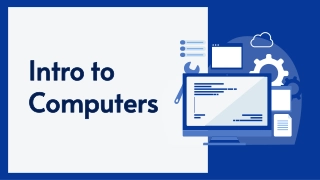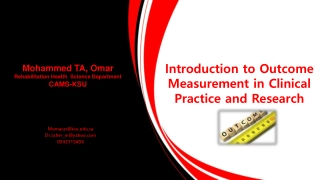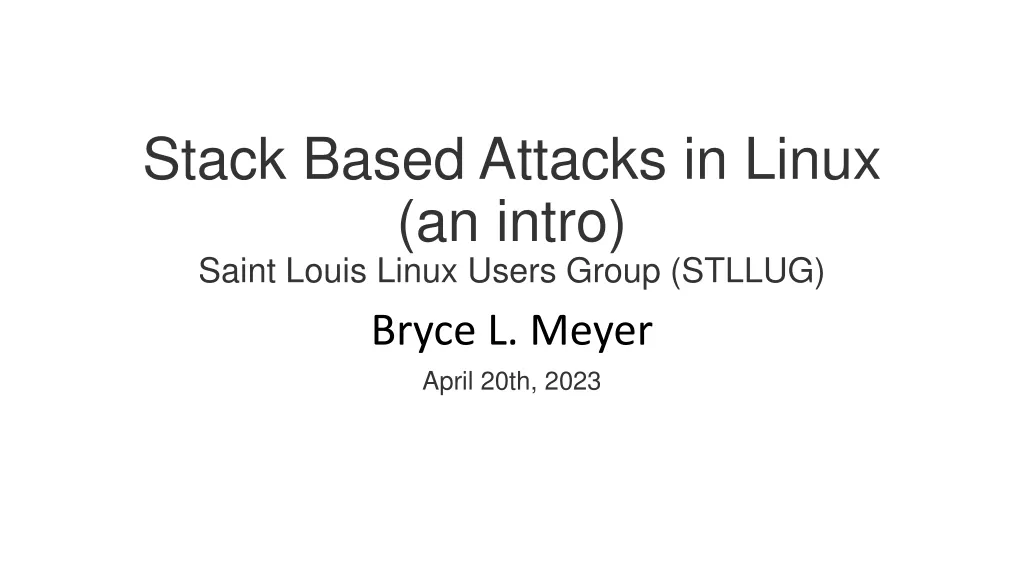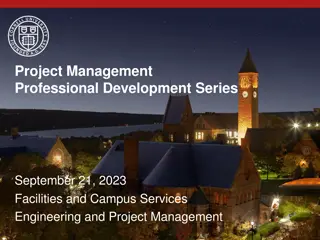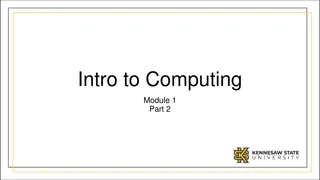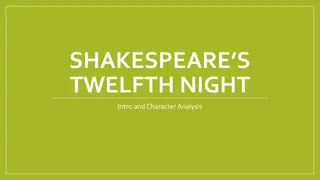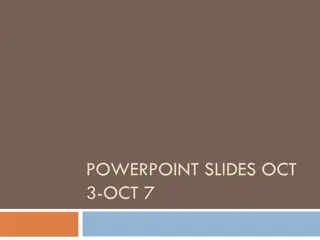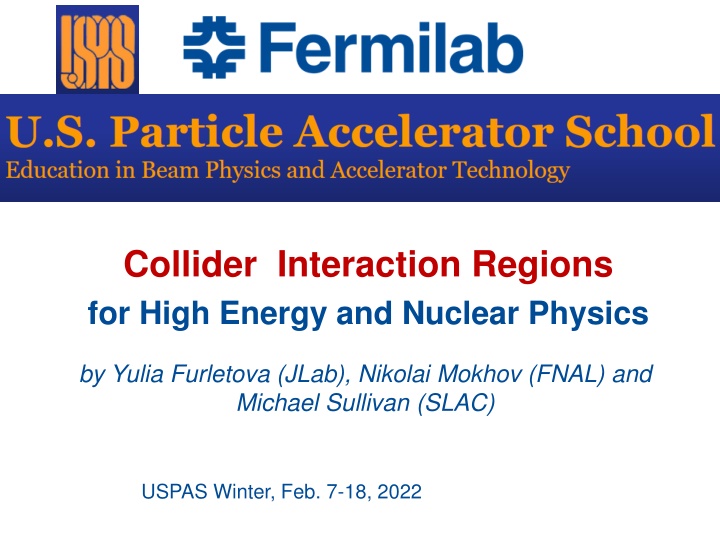
Exploring Collider Interaction Regions in High Energy and Nuclear Physics
This course delves into the physics, design, and operational aspects of Beam Delivery Systems, Interaction Regions, and Machine-Detector Interfaces in various colliders. Students will learn about collider components, machine protection, simulation codes, and modern techniques to safeguard against impacts from high-intensity beams. Prerequisites include a background in classical mechanics, electrodynamics, and accelerator physics. By the end of the course, students will grasp the functioning of high-energy colliders and be familiar with current and upcoming collider projects.
Download Presentation

Please find below an Image/Link to download the presentation.
The content on the website is provided AS IS for your information and personal use only. It may not be sold, licensed, or shared on other websites without obtaining consent from the author. If you encounter any issues during the download, it is possible that the publisher has removed the file from their server.
You are allowed to download the files provided on this website for personal or commercial use, subject to the condition that they are used lawfully. All files are the property of their respective owners.
The content on the website is provided AS IS for your information and personal use only. It may not be sold, licensed, or shared on other websites without obtaining consent from the author.
E N D
Presentation Transcript
Collider Interaction Regions for High Energy and Nuclear Physics by Yulia Furletova (JLab), Nikolai Mokhov (FNAL) and Michael Sullivan (SLAC) USPAS Winter, Feb. 7-18, 2022
Purpose and Audience (1) The purpose of this course is to introduce the students to the physics, design, technology and operational experience of the Beam Delivery System (BDS), Interaction Region (IR) and Machine-Detector Interface (MDI) of pp, proton-antiproton, Heavy Ion, e+e-, electron-ion and + - colliders. This course will review the history of colliders, present the major achievements of operational machines and the key features of near-term collider projects that are currently under development in both high-energy and nuclear physics. We will also briefly overview future project directions in High Energy Physics (HEP) and Nuclear Physics (NP). 2 N. Mokhov | USPAS: Collider IR, Introduction 02/07/2022
Purpose and Audience (2) Fundamental interactions of beam particles with material of collider components are described along with the consequences of controlled and uncontrolled impacts of high-intensity or/and high-power or/and high-energy beams on components of accelerators, beamlines, target stations, beam collimators, absorbers, detectors, shielding, and environment which can range from minor to catastrophic. Methods to protect collider components machine protection and collimation systems - are described in detail along with modern simulation codes used for design of such methods. 3 N. Mokhov | USPAS: Collider IR, Introduction 02/07/2022
Prerequisites, Objectives, Credit Requirements The focus of the course is collider interaction regions (IR). Courses in classical mechanics, electrodynamics, special relativity and physical or engineering mathematics, all at entrance graduate level; and the USPAS course Fundamentals of Accelerator Physics and Technology with Simulations and Measurements Lab or equivalent familiarity with accelerators at undergraduate or graduate level are required. It is recommended that students have general familiarity with physics of particle passage through machine components both through their aperture and outside in presence of electromagnetic field as well as modern codes allowing to do accurate modeling of all underlying physics. It is the responsibility of the student to ensure that they meet the course prerequisites or have equivalent experience. Objectives On completion of this course, the students are expected to understand the physical principles and techniques that make high energy particle colliders function, become familiar with leading operational and near-future colliders (LHC, SuperKEKB, EIC, muon colliders etc); Credit Requirements Students will be evaluated based on the following performances: Homework assignments (60% course grade), Final exam (40% course grade) 4 N. Mokhov | USPAS: Collider IR, Introduction 02/07/2022
Lecturers and Assistant Michael Sullivan (SLAC) Nikolai Mokhov (FNAL) Yulia Furletova (JLab) Chuyu Liu (BNL) 5 N. Mokhov | USPAS: Collider IR, Introduction 02/07/2022
Lecturers Yulia Furletova (JLab) Staff Scientist at Jlab, L3 manager of EIC Far-forward area. PhD: Hamburg Uni, Germany Search for Exotic Processes in Events with Large Missing Transverse Momentum in ZEUS at HERA" Expertise: Michael Sullivan (SLAC) Staff Research Physicist PhD: Univ., San Diego, 1979 in experimental high-energy physics in two-photon physics at SPEAR (SLAC Electron Positron Accelerating Ring) Nikolai Mokhov (FNAL) Distinguished Scientist, MARS group leader. PhD: MPEI, 1976 in theoretical and math physics, Study of intranuclear cascades induced by 1-5000 GeV hadrons Expertise: - Monte Carlo code developments, MARS code author. - Simulation, design and optimization of numerous accelerator and detector systems around the globe. D0 and CDF collider experiments, co- author of the Top Quark discovery at Fermilab in 1995. Spokesman for crystal-collimation experiment. A number of innovations for Tevatron and LHC colliders and their experiments. - Author of principal improvements in muon collider designs (targetry, IR, MDI, and mitigation of neutrino-induced radiation. - American Physics Society Fellow since 2002 For critical contributions to the tunderstanding of the interaction of high- energy particle beams with materials Expertise: - Developed code to study synchrotron radiation backgrounds in electron-positron colliders starting with PEP-I - On the design team for the Interaction Region of the SLAC-LBL-LBNL B-factory PEP-II. Calculated the SR backgrounds for PEP-II - Oversaw the engineering and construction of the permanent magnets for the PEP-II IR. - Member of the PEP-II operations team and also run coordinator for PEP-II for 6 out the 10 years of operation. - Have either worked on or analyzed the SR backgrounds for 16 different machines and/or designs for machines - Member of the International review committee for Belle II and member of the Accelerator Review Committee for the superKEKB - Co-chair with Manuela Boscolo of the MDI group for the FCC-ee design Hardware: - Tracking and vertex detectors (Si- based and gaseous), - Transition radiation detector, - Far-forward detectors. Physics: - Charged current reactions, - Heavy- flavor physics, - Physics beyond the Standard Model - Exclusive physics. Simulation: - Geant4 simulation of a detector setup - Physics event simulations and reconstructions - Machine Learning tools for data analysis. 6 N. Mokhov | USPAS: Collider IR, Introduction 02/07/2022
IR Class Roster Collider Interaction Regions Name Education Institution name Residence Status Anderson, Kelly gs Michigan State University United States grade 1 Cao, Jiawei gs University of Oslo Norway grade 2 Curatolo, Camilla phd INFN Italy audit 3 Deitrick, Kirsten phd Jefferson Lab United States audit 4 Gamage, Randika phd Jefferson Lab United States audit 5 Gonzalez-Ortiz, Cristhian Lobach, Ihar gs Michigan State University United States grade 6 phd Argonne National Lab United States audit 7 Reaz, Fardous gs University of Oslo Norway grade 8 Terzani, Davide phd Lawrence Berkeley National Lab United States audit 9 Unger, Jonathan gs Cornell University United States grade 10 7 N. Mokhov | USPAS: Collider IR, Introduction 02/07/2022
Week 3 : February 7 11, 2022 (IR) Mon 02/07 Tue 02/08 Wed 02/09 Thu 02/10 Fri 02/11 Introduction - all YF_1 Homewrk reports YF_2 Homewrk reports YF_3 Homewrk reports MS_5 Homewrk reports YF_5 10:00- 10:30 10:30- 11:15 11:15- 12:00 12:00- 12:30 12:30- 13:15 13:15- 14:00 14:00- 14:30 14:30- 18:00 Physics Intro MS_1 NVM_3 YF_4 MS_6 YF_6 Accelerator intro lunch lunch Lunch lunch lunch NVM_1 MS_2 MS_4 NVM_5 MS_7 NVM_2 MS_3 NVM_3 NVM_6 NVM_7 Recit Recit Recit NM Recit NM Recit NM self-work w.TA self-work w.TA self-work w.TA self-work w.TA self-work w.TA 8 N. Mokhov | USPAS: Collider IR, Introduction 02/07/2022
Week 4 : February 14 18, 2022 (IR) Mon 02/14 Tue 02/15 Wed 02/16 Thu 02/17 Fri 02/18 Homewrk reports NVM_8 Homewrk reports NVM_9 Homewrk reports YF_10 Homewrk reports MS_11 Exams 10:00- 10:30 10:30- 11:15 11:15- 12:00 12:00- 12:30 12:30- 13:15 13:15- 14:00 14:00- 14:30 14:30- 18:00 Exams MS_8 YF_8 NVM_10 YF_11 Exams lunch lunch Lunch lunch lunch YF_7 MS_9 MS_10 Special topic 2 Exams Special topic 1 YF_9 NVM_11 Special topic 3 Exams Recit Recit Recit NM Recit NM Exams self-work w.TA self-work w.TA self-work w.TA self-work w.TA Goodbye 9 N. Mokhov | USPAS: Collider IR, Introduction 02/07/2022


